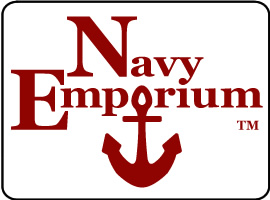The USS Potawatomi (ATF 109) was built as a fleet ocean tug during World War II, a period of significant naval expansion and technological advancement. Construction of the ship began at the United Engineering Co. Shipyard in Alameda, California, on October 20, 1942. The vessel was launched on March 20, 1943, and officially entered service with the United States Navy on October 19, 1943. The creation of the USS Potawatomi was a key part of enhancing the Navy’s capabilities for towing, salvage, and rescue missions, ensuring readiness and operational efficiency during wartime.
The ship was named after the Potawatomi people, a Native American tribe originally from the Great Lakes region. This name choice honored their cultural heritage and their historical contributions to America. The Potawatomi were known for their alliances in various conflicts throughout history, and naming the ship after them was a reflection of the Navy’s tradition of recognizing and respecting significant groups through ship names.
The USS Potawatomi was distinguished by its build and specialized equipment, tailored specifically for towing and salvage operations. It was equipped with powerful engines, heavy-duty winches, and a reinforced hull designed to withstand the demanding conditions of towing operations at sea. The ship also featured advanced navigation and communication systems for its time, ensuring operational effectiveness in maritime settings. These capabilities made the Potawatomi a versatile and dependable asset to the Navy.
The impact of the USS Potawatomi on the U.S. Navy was significant, particularly in its service during World War II and beyond. The vessel played an essential role in towing and salvage missions, often working under perilous conditions to support the operational needs of the fleet. Its contributions were crucial in maintaining the maneuverability and efficiency of naval forces in the Pacific Theater. The Potawatomi set a standard for fleet ocean tugs, underscoring their importance in naval operations.
As part of the Abnaki class of fleet ocean tugs, the USS Potawatomi was designed for long-distance towing, salvage operations, and rescue missions. The Abnaki-class vessels were known for their robustness, versatility, and ability to perform a wide range of support roles. These ships were integral to the fleet, assisting with towing, conducting salvage operations, and providing rescue capabilities. Their design and functionality made them valuable assets not only in wartime but also during peacetime operations.
Upon its commissioning on October 19, 1943, the USS Potawatomi was prepared for its duties. Following its commissioning ceremony, the ship was sent to various operational zones, where it demonstrated its capabilities and played a vital role in supporting the Navy’s overall mission. The commissioning of the Potawatomi and its subsequent service highlighted the critical role of fleet ocean tugs in ensuring the logistical support and operational efficiency of the U.S. Navy.
USS Potawatomi ATF-109: A Deep Dive into the Engineering Marvel and Firepower of a Naval Workhorse
The USS Potawatomi (ATF 109) was a fleet ocean tug in the Abnaki class, designed specifically to provide towing services to the United States Navy. Structurally, the vessel was built to withstand the demanding challenges of open-ocean towing and salvage missions. Its hull was constructed from high-strength steel, ensuring resilience against harsh sea conditions. The ship measured 205 feet in length, with a beam of 38 feet and a draft of 15 feet, providing a stable platform for its various operations. Its open deck area was well-equipped to handle towing gear and salvage tools, enhancing its versatility and functionality as an essential support asset to the Navy.
In terms of technology, the USS Potawatomi featured cutting-edge systems that bolstered its operational efficiency. Powered by two General Motors diesel engines producing a total of 3,600 horsepower, the vessel was capable of reaching speeds of up to 16 knots and had a cruising range of approximately 15,000 nautical miles. The ship was also equipped with advanced navigation and communication gear, including radar and sonar systems, ensuring safe operations at sea. Additionally, it had a towing winch and various salvage tools that enabled it to carry out its primary duties effectively.
Although the USS Potawatomi was primarily designed for support rather than combat, it was armed for self-defense. It was equipped with a 3-inch/50 caliber gun mount capable of firing up to 20 rounds per minute, with a range of 14,600 yards, to defend against surface and aerial threats. The ship also carried twin 20mm Oerlikon cannons, effective against low-flying aircraft and small surface targets. While not heavily armed, the ship's weaponry was sufficient to protect itself when needed while focusing on its primary towing and salvage tasks.
The strength of the USS Potawatomi lay in its robust build, advanced technology, and carefully planned armament. The ship’s design balanced the need for self-defense with its primary function of providing efficient towing and salvage support, ensuring both operational success and safety. The combination of a powerful propulsion system, advanced navigation and communication tools, and a well-crafted hull made the Potawatomi a reliable and adaptable vessel throughout its years of service. These qualities solidified its importance as an invaluable asset to the United States Navy.
USS Potawatomi ATF-109 Crew Member Reports of Time Aboard
The USS Potawatomi (ATF-109) guestbook posts offer a poignant look into the lives of the ship's crewmembers, providing a lasting tribute to those who served aboard this vessel during World War II. These brief yet heartfelt entries are often shared by family members and friends, keeping the memories of these men alive and honoring their contributions to the war effort.
One of the most touching entries is from the family of John Ash, who served aboard the USS Potawatomi in 1943 as a Seaman Second Class. John served as a radarman, a crucial role that involved operating and interpreting radar equipment to detect enemy ships and aircraft. His entry was posted posthumously by a family member, as John passed away in October 1999. Through the guestbook, John is remembered not only for his dedicated service but also for the deep bond of friendship he formed with Carl Bowersox, another crewmember. Their friendship underscores the camaraderie and close-knit relationships that were formed among the crew during their time together.
Another entry comes from the family of George Roberts, who served aboard the USS Potawatomi in 1942. While his specific role on the ship is not mentioned, the post reflects the desire of his family to reconnect with others who might have served with him. George passed away on April 20, 1975, and his family wanted to ensure that his memory lived on among those who shared in the experiences aboard the ship.
These guestbook posts are a testament to the enduring legacy of the USS Potawatomi and its crew. They capture the essence of the shared experiences, friendships, and the lasting impact of their service during a pivotal time in history. Through these memories, the spirit of the USS Potawatomi and the men who served aboard her continue to be celebrated and remembered, ensuring their contributions to both the Navy and the nation are never forgotten.
USS Potawatomi ATF-109: Evolution of a Naval Workhorse and Its Enduring Legacy
During World War II, the USS Potawatomi (ATF-109) played a critical role in the Pacific Theater by assisting in the salvage of damaged vessels and ensuring the continued effectiveness of naval operations. Its primary function of towing and salvage was vital in keeping the fleet operational in challenging conditions. After the war, the USS Potawatomi continued to serve admirably, taking part in a variety of tasks including training exercises, search and rescue missions, and humanitarian operations.
The ship's reliability and versatility made it an indispensable asset to the Navy, supporting both combat and non-combat activities. The USS Potawatomi's legacy highlights the crucial role that support vessels play in maintaining fleet readiness and operational efficiency. By continually upgrading its systems and expanding its mission capabilities, the ship demonstrated exceptional adaptability and resilience—qualities that made it an enduring component of the Navy's fleet.
The impact of the USS Potawatomi extended far beyond its towing operations; it also encompassed lives saved during rescue missions and strategic advantages gained through its support in crucial naval operations. Its storied service underscores the importance of fleet ocean tugs in warfare and maritime security, and serves as a testament to their vital contributions to the success of naval efforts on a global scale.
USS Potawatomi ATF-109: A Legacy of Valor and Service on the High Seas
The USS Potawatomi (ATF 109) played a significant role during its time in service, participating in both wartime and peacetime operations. Commissioned during World War II, this fleet ocean tug was primarily responsible for towing and salvage operations in the Pacific Theater. Its robust design and versatile capabilities were invaluable, providing essential support to combat and auxiliary vessels. As the war progressed, the USS Potawatomi was integral in recovering and repairing damaged ships, ensuring that the fleet remained operational and contributing to the success of operations that ultimately led to the Allied victory.
In the post-World War II period, the USS Potawatomi continued to serve, transitioning to peacetime activities and supporting operations in various conflicts. During the Korean War, the vessel was deployed to the Korean Peninsula, where it provided vital towing, salvage, and rescue services. The ship's crew demonstrated exceptional skill and courage, often facing perilous situations while ensuring the operational readiness of the fleet. The presence of the USS Potawatomi underscored the critical role that fleet tugs play in supporting logistics and operational activities, enabling frontline units to conduct their missions efficiently.
Throughout its service, the USS Potawatomi received several awards and accolades, reflecting its exceptional performance and the dedication of its crew. Among the honors it received were the Navy Unit Commendation, the Asiatic-Pacific Campaign Medal with battle stars, the World War II Victory Medal, and the Korean Service Medal. These awards not only celebrated the ship's accomplishments but also highlighted the crucial role fleet tugs play in naval warfare and support missions.
The legacy of the USS Potawatomi has set a high standard for generations of support vessels, establishing it as a symbol of resilience, adaptability, and unwavering dedication to mission objectives. Although it was eventually removed from the Naval Vessel Register, the enduring legacy of the USS Potawatomi serves as a testament to the significant contributions of fleet tugs in both combat and peacetime operations. Its deployments and commendations tell a story of how essential support roles enable the United States Navy to project strength and maintain maritime superiority worldwide.
USS Potawatomi ATF-109 Ship Specifications
| Specification | Details |
|---|---|
| Class | Abnaki Class Fleet Ocean Tug |
| Commissioned | February 12, 1944 |
| Displacement | 1,675 tons |
| Length | 205 feet |
| Beam | 38.5 feet |
| Draft | 15.3 feet |
| Speed | 16.5 knots |
| Complement | 85 |






